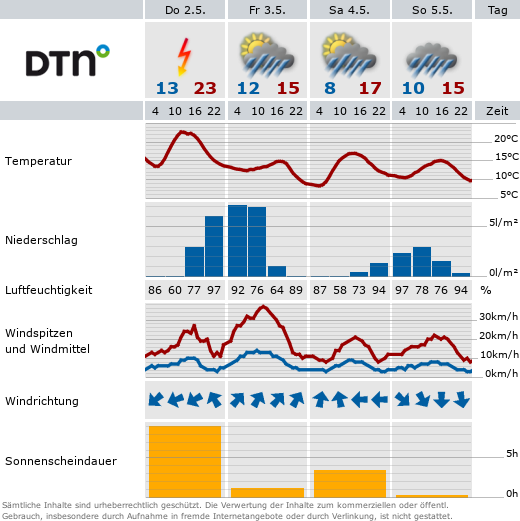You are here:
- Startseite
- Research Group
- Team
- Dr. Dahae Lee
Dr. Dahae Lee
Profile
Current research project
Actor-relations matter: The impact of central actors on public space management (2025-2028)
Research Interests
- Co-production in urban planning
- Capability approach to co-production
- Public space governance and management
- Urban transformation and its spatial impact
- Governance approach to building urban resilience

CV
Academic Experience
Since 06/2019
Research Associate at the Department of European Planning Cultures, Faculty of Spatial Planning of the Technical University of Dortmund
08/2023 - 05/2025
Postdoctoral researcher at the Faculty of Architecture and the Built Environment, Delft University of Technology
Education
2021
Technical University of Dortmund, Ph.D. in Spatial Planning
2014
University College London, MSc Planning, Design and Development
2013
Humboldt University of Berlin, BA Geography
Publications
Books/ Edited Volumes/ Special issues
The Trustmaking Collective (Ed.) (2025). A guidebook on youth empowerment in urban transformation. Nai010 publishers. DOI: 10.59490/mg.218
Lee, D., Feiertag, P., & Unger, L. (Eds.) (2024). Co-production in the urban setting: Fostering definitional and conceptual clarity through comparative research. Urban Planning 9. DOI: 10.17645/up.i313
Lee, D. (2022). Public space in transition. Co-production and co-management of privately owned public space in Seoul and Berlin. transcript Verlag: Bielefeld. DOI: 10.14361/9783839462324
Peer-Reviewed Journal Articles
Lee, D., Feiertag, P., & Unger, L. (2024). Co-production, co-creation or co-design of public space? A systematic review. Cities 154, 105372. DOI: 10.1016/j.cities.2024.105372
Lee, D., & Scholten, N. (2024). Co-production of privately owned public space: Who, why, when, and how? Urban Design International 29, 123-133. DOI: 10.1057/s41289-024-00239-2
Lee, D., Feiertag, P., & Unger, L. (2024). Defining co-production: A review of the planning literature. Journal of Planning Literature 39(2), 227-240. DOI: 10.1177/08854122231219919
Dunlop, A., Hübert, O., Aqel L., Abdelilah, R., & Lee, D. (2023). How public are hybrid public spaces? Assessing publicness of privately owned public spaces in Hamburg. Journal of Urbanism. DOI: 10.1080/17549175.2023.2284221
Lee, D. (2023). Actors, the actor network and their impact on public space management: Social network analysis as a method. Spatial Research and Planning 81(4), 373-387. DOI: 10.14512/rur.683
Lee, D., & Scholten, N. (2022). Do welfare states need privately owned public spaces? The relevance of and need for such spaces in German cities. Journal of Urban Design 27(5), 513-527. DOI: 10.1080/13574809.2022.2036110
Lee, D. (2022). Whose space is privately owned public space? Exclusion, underuse and the lack of knowledge and awareness. Urban Research & Practice 15(3), 366-380. DOI: 10.1080/17535069.2020.1815828
Zimmermann, K., & Lee, D. (2021). Environmental justice and green infrastructure in the Ruhr. From distributive to institutional conceptions of justice. Frontiers in Sustainble Cities 3, 670190. DOI: 10.3389/frsc.2021.670190
Book Chapters
Lee, D., Musch, M., Ranalli, F., & Zaat, N. (2025). Building trust and capabilities of youth. Urban living lab Rotterdam, The Netherlands. In The Trustmaking Collective (Ed.), A guidebook on youth empowerment in urban transformation (pp. 294-323). Nai010 publishers. DOI: 10.59490/mg.218
The Trustmaking Collective (2025). A catalogue of trustmaking practices. In The Trustmaking Collective (Ed.), A guidebook on youth empowerment in urban transformation (pp. 187-223). Nai010 publishers. DOI: 10.59490/mg.218
Unger, L., & Lee, D. (2023). Participation during and after the pandemic: Lessons learned from an urban revitalisation project in Dortmund, Germany. In E. Lissandrello, J. Sorensen, K. Olesen, & R.N. Steffansen (Eds.), The 'new normal' in planning, governance and participation (pp. 151-164). The Urban Book Series. Cham: Springer. DOI: 10.1007/978-3-031-32664-6_12
Zimmermann, K., & Lee, D. (2021). Building resilience in the context of multi-level governance — Insights from a living lab in the Ruhr. In G. Hutter, M. Neubert, & R. Ortlepp (Eds.), Building resilience to natural hazards in the context of climate change (pp. 209-228). Wiesbaden: Springer. DOI: 10.1007/978-3-658-33702-5_9
Others
Peters, K., & Lee, D. (2020). Ensuring inclusive and accessible public spaces in an austerity context. In J. Riegler, & J. Bylund (Eds.), Unfolding dilemmas of urban public space (pp. 31-35). JPI Urban Europe. Download here
Presentations
(Selected Presentations)
Lee, D., Musch, M., Ranalli, F., Zaat, N. Building capability and confidence of youth and professionals for designing and implementing context-specific planning interventions. Paper presented at the 2025 RSA Conference, Porto.
Lee, D., Feiertag, P., Unger, L. What do we mean by co-production? Examining its use in the planning field. Paper presented at the 2025 RSA Conference, Porto.
Lee, D. Analysing and evaluating co-productive planning practice in Germany. Paper presented at the 2025 EURA Conference. Bristol.
Lee, D., Feiertag, P., Unger, L. Co-production: Theory and practice in the planning field. Paper presented at the 2024 UAA Conference. New York.
Lee, D. Co-production and co-management of public space – Planning instruments for privately owned public space in a transitional context. The case of Seoul and Berlin. Paper presented at the 2023 DOKO Conference. Dortmund, Germany.
Lee, D. Public space management networks. Paper presented at the 2022 EURA Conference. Milan, Italy.
Lee, D. Whose space is privately owned public space? Exclusion, underuse and the lack of knowledge and perception. Paper presented at the 2021 ACSP Annual Conference. Online.
Lee, D., & Scholten, N. Rethinking the provision of public space in welfare states – The case of Germany. Paper presented at the 2021 AESOP Annual Congress. Online.
Lee, D. Co-production of public space – Planning instruments used for privately owned public space in a transitional context. The case of Seoul and Berlin. Paper presented at the 2020 ACSP Annual Conference. Online.
Lee, D. Cities in search for competitiveness and justice – The case of Mediaspree, Berlin. Paper presented at the 2019 AESOP Annual Congress. Venice, Italy
Lee, D. Public space after transformation – Regulatory instruments used for privately owned public space. Paper presented at the 2019 EURA-UAA Conference. Dublin, Ireland.







![[Translate to English:] [Translate to English:]](/storages/epc-raumplanung/_processed_/8/e/csm_Rotterdam_gelbeBruecke_KarZim_f6ebd59e22.jpg)
![[Translate to English:] [Translate to English:]](/storages/epc-raumplanung/_processed_/3/5/csm_Rotterdam_KarZim_73a906454b.jpg)
![[Translate to English:] [Translate to English:]](/storages/epc-raumplanung/_processed_/a/8/csm_2SaoPaulo_KarZimm_cd6c9dff0d.jpeg)
![[Translate to English:] [Translate to English:]](/storages/epc-raumplanung/_processed_/b/4/csm_1SaoPaulo_KarZimm_96516dbf7d.jpeg)